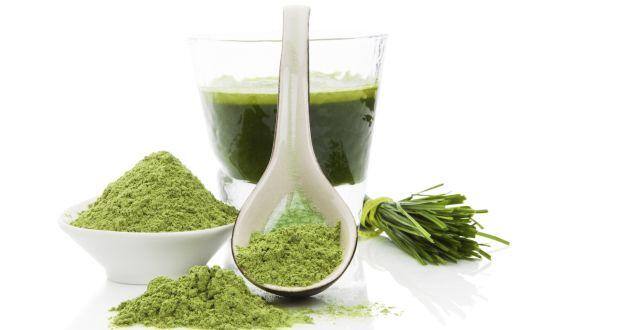10 reasons wheatgrass should be added to your diet

Hippocrates, the father of modern medical science and the great Greek philosopher, once said – ‘Let thy food be thy medicine.’ The reason being, the body has an inbuilt ability to heal itself given the right nutrition, proper environment and adequate exercise. But the modern day mortals seem to have ignored this dictum entirely. If we look deep most of our lifestyle related disorders and ailments stems from our sedentary lifestyle and wrong eating habits.
Though it’s not easy to change much of your lifestyle but incorporating small changes can go a long way to help you be in the pink of health. If you are wondering where to start from, try this – Wheatgrass.
What is Wheatgrass?
Wheatgrass is a kind of grass which has therapeutic and healing properties. Like most plants it contains chlorophyll, amino acids, minerals, vitamins and enzymes. Proponents of wheatgrass claim this grass to have unique curative properties and provide supplemental nutrition to the diet. Wheatgrass though belongs to the wheat family has no wheat gluten in it. It is usually found in form of grass, juice or even wheatgrass powder.
How it helps
Wheatgrass contains chemicals that are thought to have antioxidant and anti-inflammatory properties. It also helps to kill bacterial infections in the body.
Wheatgrass is supposed to have a lot of health benefits, some of it are as follows:
1. Helps to control blood pressure:
Regular intake of wheatgrass increases red blood cell count in the blood. It also cleans the blood, other organs and the gastrointestinal tract of debris. It dilates the blood pathways hence reducing blood pressure.
2. Helps to combat obesity:
It stimulates the thyroid gland and hence helps to deal with obesity, indigestion and a host of other complaints of the endocrine system.
3. Helps in detoxification:
Wheatgrass juice acts as a detoxifier protects the liver and also aids blood purification. It restores the alkalinity of the blood and can effectively be used for treating peptic ulcers, ulcerative colitis, constipation, diarrhea and other problems of the gastrointestinal tract. It also helps to relieve symptoms of constipation.
4. Helps build immunity:
The enzymes and amino acids found in wheatgrass can protect from carcinogens like no other food or medicine. It strengthens the cells in the body, detoxifies the liver and chemically neutralizes the environmental pollutants found in the blood.
5. Helps fight various diseases:
Though there isn’t much scientific evidence but there are unpublished studies that show wheatgrass juice can fight tumors without the usual toxicity of the drugs. Also aids in the treatment of cancer, arthritis, insomnia, asthma, menstrual problems etc.
6. Helps in skin rejuvenation:
A paste of wheatgrass powder made with milk and a pinch of turmeric when applied on face can act as a powerful face pack to deal with troubles of acne, white and black heads, skin tan, burn etc.
7. Helps in weight management:
Surprisingly wheatgrass can help in both weight loss and weight gain when used with a proper diet plan.
8. Can be used as an antiseptic:
Wheatgrass has certain healing properties. It works wonders for cuts, burns, scrapes, rashes, poison ivy, athlete’s foot, insect bites, boils, sores, open ulcers, tumors, and so on. Make a paste and apply it. Replace every two to four hours for best results.
9. Helps improve reproductive health:
Continuous use of wheatgrass helps in increasing vigor, vitality and helps conceive.
How to use it?
You can either make a juice out of the raw wheatgrass plant or opt to use wheatgrass powder. If you use wheatgrass powder, add one spoonful of the powder in a glass of water stir well and have it every day. To ensure better result also follow a healthy diet consisting of green veggies, salads, soups, rice, sprouts, rotis, fruits and dry fruits.
Avoid intake of bakery products, fried foods, spicy foods, non-vegetarian stuff, alcohol, tobacco etc.
Where do you get wheatgrass?
If you have space and want to nurture a hobby of gardening you can grow wheat grass in your backyard too. It takes only seven days for the seeds to germinate and grow to an extent ready to be consumed. Else buy wheatgrass powder from a reputed naturopathy retailer or ayurvedic shop. Before you pick the product learn to read the label correctly to ensure you do not end up with a fake one. Check if the package says ‘organic’, if it is sealed and airtight. Many wheatgrass suppliers might grow the grass indoor where the amount of sunlight received is limited. Read on the label to find if the grass was grown organically in the farm. If it doesn’t meet these criteria you should probably give it a miss and check for a genuine one.
Does it have any side effects?
Not enough is known about the safety and long term use of wheatgrass. Though it is observed that wheatgrass can cause nausea, appetite loss or even constipation in some people. It’s advisable for pregnant woman and breastfeeding mothers to stay off its consumption unless advised by the practitioner.
No comments:
Post a Comment